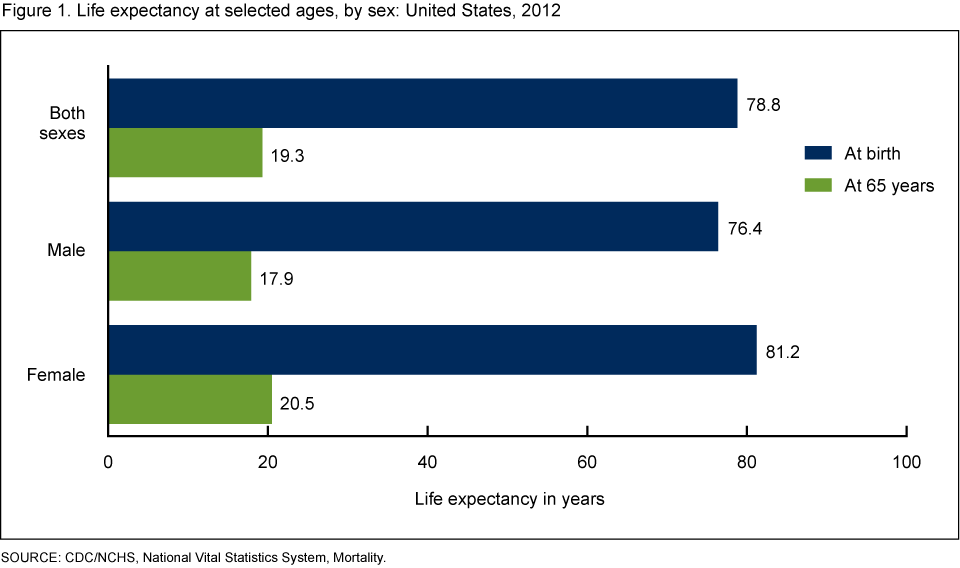Mortality in the United States, 2012
Posted on byA new NCHS report presents 2012 U.S. final mortality data on deaths and death rates by demographic and medical characteristics. These data provide information on mortality patterns among residents of the United States by such variables as sex, race and ethnicity, and cause of death. Information on mortality patterns is key to understanding changes in the health and well-being of the U.S. population. Life expectancy estimates, age-adjusted death rates by race and ethnicity and sex, 10 leading causes of death, and 10 leading causes of infant death were analyzed by comparing 2012 final data with 2011 final data.
Key Findings from the Report:
- Life expectancy at birth for the U.S. population reached a record high of 78.8 years in 2012.
- The age-adjusted death rate for the United States decreased 1.1% from 2011 to 2012 to a record low of 732.8 per 100,000 standard population.
- The 10 leading causes of death in 2012 remained the same as in 2011. Age-adjusted death rates decreased significantly from 2011 to 2012 for 8 of the 10 leading causes and increased significantly for one leading cause (suicide).
- The infant mortality rate decreased 1.5% from 2011 to 2012 to a historic low of 597.8 infant deaths per 100,000 live births. The 10 leading causes of infant death in 2012 remained the same as in 2011.
Posted on by
Categories Deaths
Page last reviewed: October 8, 2014
Page last updated: October 8, 2014
Content source:
CDC, National Center for Health Statistics


